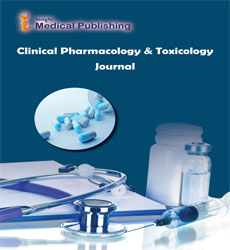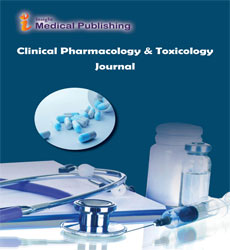A Study on Pharmacodynamics Interactions
Muhammad Suleman Awan*
Department of Electrical Engineering, National University of Sciences and Technology, Islamabad, Pakistan
- *Corresponding Author:
- Muhammad Suleman Awan Department of Electrical Engineering, National University of Sciences and Technology, Islamabad, Pakistan, Email: msawan17@ee.ceme.edu.pk
Received : December 01, 2021; Accepted : December 15, 2021; Published : December 22, 2021
Citation: Muhammad Suleman Awan (2021) A Study on Pharmacodynamics Interactions.
In cases where the two drugs are used together, the substance can be added (the result is what you expect when you combine the effects of each drug taken freely), synergistic (joining the drug causes a greater effect than expected), or hostility (combining drugs causes a more modest effect than expected). There is disagreement here and there whether the drugs are effective or not, as the effects of one drug can be transferred from one patient to another. Synergistic interactions may be helpful to patients, but may also increase the risk of overdose. Drug organization guidelines enable regular drug risk assessments through presentation and risk in each recovery class, to show the range from risk-free to high-risk. Both co-operative strengths and threats may occur at different intervals between medication, and health. Different receptor reactions to drug activity have brought about different factors, for example, "fractional agonist", "serious agonist" and so on. These ideas have major functions in the pharmacodynamics of these interactions. The duplication of orders available at this level, in line with the way certain response components of others, drugs are not known certainly means that it is very difficult to provide a flawless group of these ideas. It can be assumed that most creators can twist any given classification. Changes in business response to drug planning are important changes in pharmacodynamics interactions. This progression is very difficult to demonstrate in light of the wide variety of mechanisms available, as well as the extent to which many drugs can have their effect on various systems. This wide variety and aims to ensure that in all but the obvious cases it is important to research and understand these systems. The biggest skepticism is that there is a vague connection than the known ones.
Pharmacodynamics interactions may occur in:
• Pharmacological receptors: Receptor receptors are the most effective, yet equally the most widely used. From a pharmacodynamics perspective, two drugs can be considered as
• Homodynamic, assuming they follow the same receiver.
Therefore, it could be:
• Non-modified agonists, thought to bind to the base of the receptor, causing the same effect as that of the main drug.
• Medium agonists if, to the limit of one of the receptor sites, have the same effect as the main drugs, but with less potency.
• Improper people, it is thought to interact directly with the receptors system but their effect is contrary to that of basic drugs.
These include:
• Heterodynamic competitors, in case they follow undisputed receptors.
• Signal transmission systems: these are the atomic cycles that begin after the drug interacts with the receiver.

Open Access Journals
- Aquaculture & Veterinary Science
- Chemistry & Chemical Sciences
- Clinical Sciences
- Engineering
- General Science
- Genetics & Molecular Biology
- Health Care & Nursing
- Immunology & Microbiology
- Materials Science
- Mathematics & Physics
- Medical Sciences
- Neurology & Psychiatry
- Oncology & Cancer Science
- Pharmaceutical Sciences
